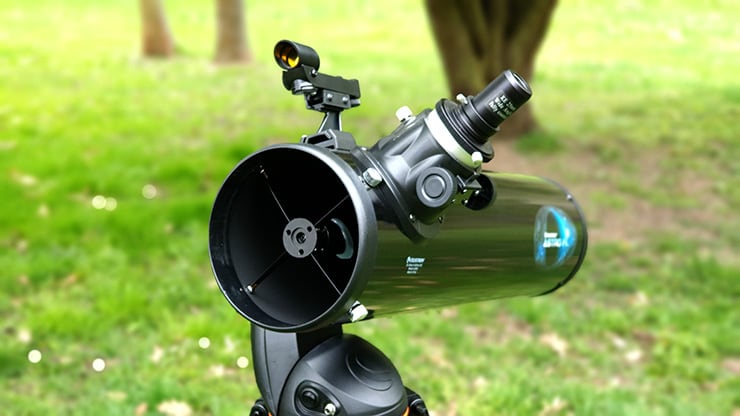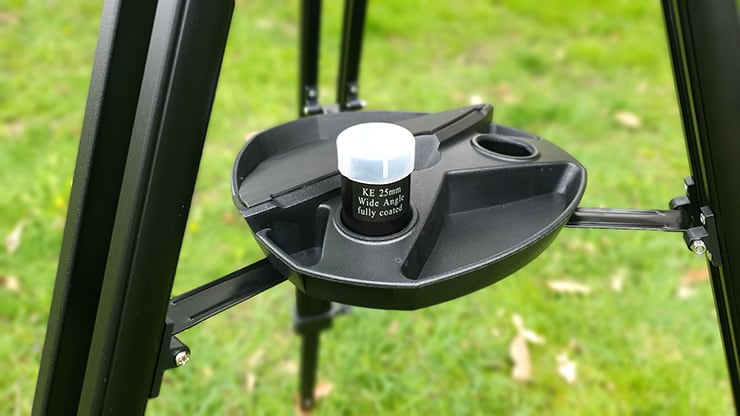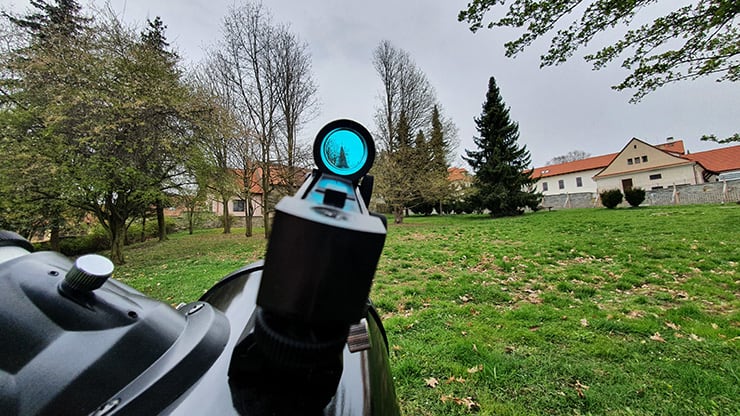Celestron Astro Fi 130 telescope
Categories: Astronomy
A new range of Astro Fi telescopes has appeared relatively recently. The entire line draws inspiration from the original Celestron SLT series (which is fortunately still in production, although for a while it looked like it wouldn't be). The Astro Fi telescopes and the NexStar series are some of the few telescopes that are equipped with their own WiFi. Connecting to your phone or tablet finally brings you into the 21st century.
The Celestron Astro Fi 130 telescope makes very nice use of the GoTo technology capabilities. It has enough aperture to let you see a really large number of objects in the night sky in decent light conditions (darkness), including some of the largest objects from "deep space". The construction is not bad at all either, and although it is very light, the telescope's tube will carry it with ease.
The 130mm mirror is sufficient for observing deep space (the most obscure objects) and, of course, the planets and moon. The tube is identical to many Newtonian telescopes on the market. The focal ratio of f/5 allows a relatively wide field of view (2.1° - which you can imagine as if you put 4 full moons side by side with the 25mm eyepiece that is included). With a well aligned telescope and also under favourable climatic conditions, the Astro Fi 130 can achieve up to 260x magnification. And that's very respectable.
Accessories and telescope mount
The binoculars come with 25mm and 10mm Kellner eyepieces. The accessories also include a StarPointer for aligning the binoculars and a smartphone mount built into the objective lens cap.
The Astrofi has a different set of "gears" in the mount head than the NexStar SLT, as there is significantly less play. Also, the tripod, which is made of aluminum, is different and surprisingly nice and stable (again, compared to the NexStar).
Like other Celestron GoTo telescopes, the Astrofi 130 is powered by eight AA batteries. These are inserted into the block and attached to the side of the tripod. This is a standard solution. I would only have reservations about the uninsulated contacts of the block, which could easily take a little of the shrinkage.
Connection to Celestron's Skyportal app
Download the app to your phone. Connect to the telescope's Wi-Fi and click on "Connect & Align" in the app. The app will prompt you to align. This is a simple process where you focus on three targets in turn and after about four minutes your binoculars will be ready to use.
The binoculars then get the data from your phone and the alignment is surprisingly accurate. If you do everything right (there will be a video on LP soon showing how easy it is), you will get an error of units of angular minutes per hour of operation. And you can take a lot of pictures.
What can you see with the Celestron Astro Fi 130?
Considering the size and price, it's a great dee-sky telescope. Decent shielding, a wide field of view, and even a stable tripod make it a great tool for observing many open star clusters and nebulae. Of course, it's also great for moon and planetary observing. On Jupiter you can distinguish cloud bands and the red spot. You can see all four of the largest moons.
Astrophotography
Yes and no. The azimuthal design, despite its accuracy and stability, is better suited for visual observation. The design is very lightweight, making the telescope easy to move, but not capable of supporting professional photographic setups for long exposures. So you can take nice planetary images, but it will take a 5x Barlow eyepiece to achieve the optimal focal length.
Overall rating
We will continue to work with the telescope. And you can expect at least one more article on the LP. At its price, this is a very good telescope and it's hard to pick something better.







The article is included in categories: